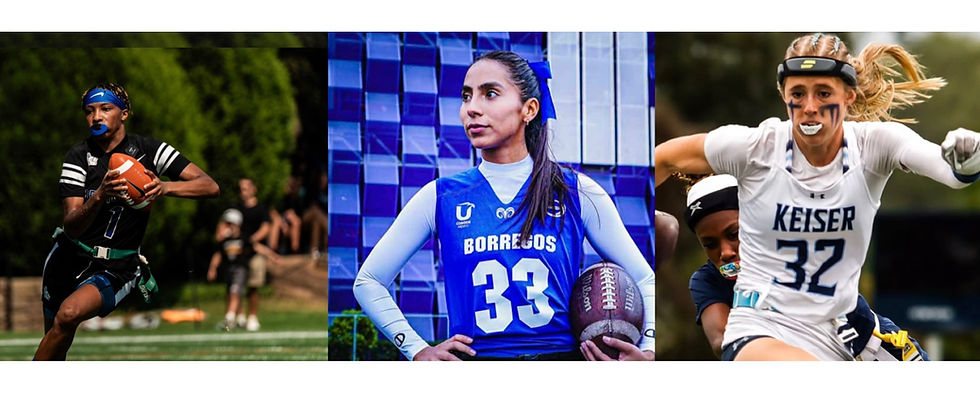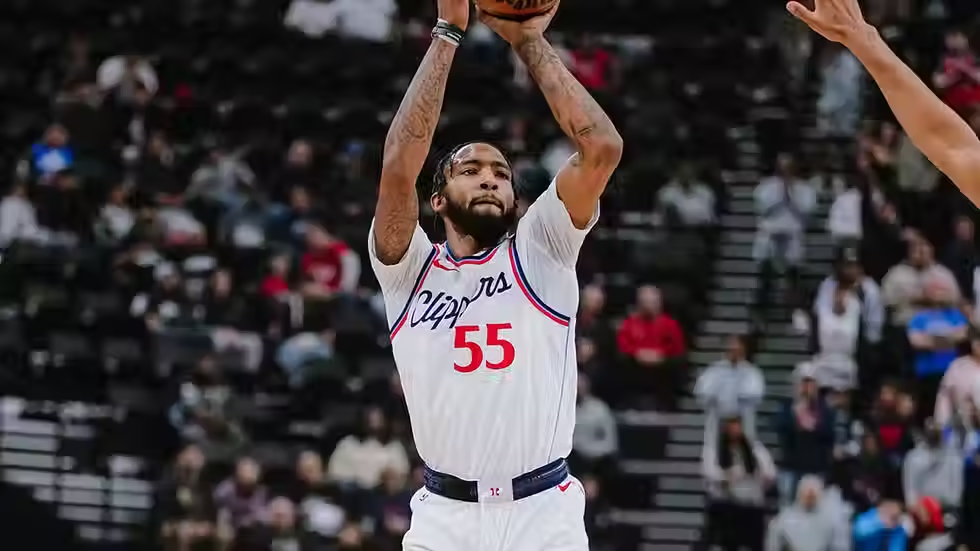Assessing a Potential Antitrust Case Against Fanatics
- Greg Moretto

- May 13, 2023
- 4 min read

As a sports fan in 2023, it is nearly impossible to not have heard of the apparel brand Fanatics. Whether it is through their countless advertisements on live sports programs, or their highly-visible branding on every major sports league’s online store, Fanatics has become the most prominent sports retailer in the market today[1]. Recently however, Fanatics and CEO Michael Rubin have announced they are making the jump to in-game apparel, with a deal beginning in 2024 with the NHL to become their official on-ice uniform partner[2]. It is worth noting however, that while this marks the first time a Fanatics logo will appear on in-game uniforms, the company has manufactured the Nike-branded MLB on-field uniforms since 2017, so it is not completely foreign territory for the brand[3]. Now, with Fanatics moving into the on-field uniform business, I became curious about how a company with retail partnerships with every major US sports league doesn’t violate antitrust law? So, after doing some digging, I found a few cases filed against Fanatics in recent years alleging just that. The first, Casey’s Distributing Inc. v The Office of the Commissioner of Baseball et al, was filed in June of 2022. This case is still in the courts, but it accuses MLB and Fanatics of engaging in horizontal agreements with their fellow licensees to perform a group boycott of third-party entities from competing in the market[4]. Another case filed against Fanatics alleging antitrust actions is Maldonado et al v. National Football League Inc. et al. Much like Casey’s v. MLB, this case accuses Fanatics and the NFL of conspiring to do a group boycott against third-party sellers who had already purchased league merchandise via Amazon’s marketplace[5]. This case is also still ongoing, and no settlement or verdict has yet been reached or reported.
If Fanatics is found guilty of antitrust violations, they could be required to pay millions of dollars in damages. But what does it mean to violate antitrust law, and what are the requirements courts use to determine if such a violation occurred? In assessing allegations of antitrust violations, the courts rely on the Sherman Act of 1890. The Sherman Act contains two sections, Section 1 which covers restraints of trade, and Section 2 which covers monopolization in a market. To prove a Section 1 violation, the plaintiff must show there was an agreement made between two or more parties, that this agreement unreasonably restrained trade, and that this agreement affected interstate commerce. For example, to look again at Fanatics, it would be easy to prove they had an agreement with the NFL or MLB as they publicly announce all of their retail partners[6]. To touch on the last requirement of proving a Section 1 violation, that the agreement affects interstate commerce, this is something that is almost always a guarantee in our modern contexts. Especially considering Fanatics partners with teams and leagues all over the country, it is obvious any potential antitrust action by Fanatics would affect interstate commerce. Now, for the hardest and most complicated part to prove, whether or not the agreement unreasonably restrained trade. Courts use a few different tests to determine what constitutes an “unreasonable” restraint of trade. The first test is known as the “per se” rule, which essentially looks at the actions in question and sees if they are inherently anti-competitive. Examples of activity that would violate the “per se” rule are group boycotts (which both Casey v. MLB and Maldonado v. NFL allege), horizontal agreements (which Casey v. MLB alleges), and price-fixing. Another kind of test the courts use to determine “unreasonable” restraints of trade is the “rule of reason” test. This analysis weighs the pro-competitive results of an agreement against its anti-competitive consequences, like a balancing test. Lastly, some courts use a “quick look” test, which incorporates aspects of the “per se” and “rule of reason” analyses as a means to determine if an antitrust violation occurred. In both Casey v. MLB and Maldonado v. NFL, the court will likely employ one or more of these tests in assessing the validity of the plaintiff’s claims.
So, with these requirements and tests in mind, does Fanatics violate antitrust law? The courts have not yet decided that the agreements made by Fanatics with any of their 900+ sports properties violate antitrust law[7]. However, the two aforementioned cases are seeking to change that. A reason proving Fanatics guilty of breaking antitrust law could be especially difficult because for 3 out of the 4 major US sports, both the player’s union and the league office own shares of the brand[8]. This is relevant because if, say, only the leagues invested in Fanatics, a challenge from a player’s union could come alleging antitrust violations regarding licensing of player memorabilia or sharing of revenues generated from the sale of such memorabilia. Throughout recent antitrust and labor law history, player’s unions have been relatively successful against their leagues in antitrust cases[9]. Since the player’s unions also have a financial interest in Fanatics, it is highly unlikely any such suit would be brought. It will instead be left up to cases like Casey v. MLB and Maldonado v. NFL to challenge the vast market power Fanatics has over the sports retail industry.
Greg Moretto is a 2023 graduate of Boston College. He will be working at Ropes & Gray in their corporate department as a paralegal come June. He can be found on Twitter @gregjmoretto
Sources: [1] https://shop.nhl.com/ , https://www.mlbshop.com/ , https://store.nba.com/ , https://www.nflshop.com/ [2] https://www.espn.com/nhl/story/_/id/35906901/everything-need-know-nhl-fanatics-jersey-deal [3] ESPN [4] https://www.law360.com/articles/1501473/-fanatics-sports-merchandise-antitrust-suits-spread-to-mlb [5] https://www.law360.com/articles/1499448 [6] https://www.fanaticsinc.com/all-partners [7] https://huddleup.substack.com/p/how-fanatics-plans-to-become-a-100#:~:text=But%20this%20really%20shouldn%27t,%2C%20MLS%2C%20and%20Formula%201. [8] HuddleUp Blog [9] See Haywood v. NBA, Radovich v. NFL, Mackey v. NFL, McNeil v. NFL, Jackson v. NFL etc.







EPS Machine EPS Cutting…
EPS Machine Eps Raw…
EPS Machine EPS Recycling…
EPS Machine EPS Mould;
EPS Machine EPS Block…
EPP Machine EPP Shape…
EPTU Machine ETPU Moulding…
EPS Machine Aging Silo…
EPTU Machine ETPU Moulding…
EPS Machine EPS and…
EPS Machine EPS and…
AEON MINING AEON MINING
AEON MINING AEON MINING
KSD Miner KSD Miner
KSD Miner KSD Miner
BCH Miner BCH Miner
BCH Miner BCH Miner
EPS Machine EPS Cutting…
EPS Machine Eps Raw…
EPS Machine EPS Recycling…
EPS Machine EPS Mould;
EPS Machine EPS Block…
EPP Machine EPP Shape…
EPTU Machine ETPU Moulding…
EPS Machine Aging Silo…
EPTU Machine ETPU Moulding…
EPS Machine EPS and…
EPS Machine EPS and…
AEON MINING AEON MINING
AEON MINING AEON MINING
KSD Miner KSD Miner
KSD Miner KSD Miner
BCH Miner BCH Miner
BCH Miner BCH Miner